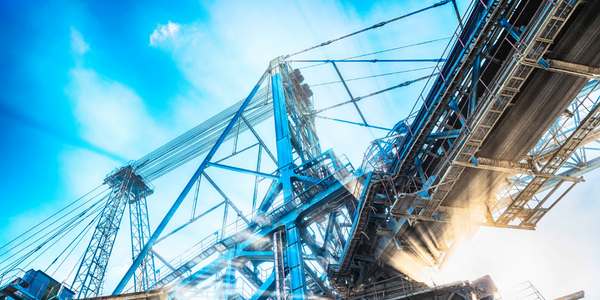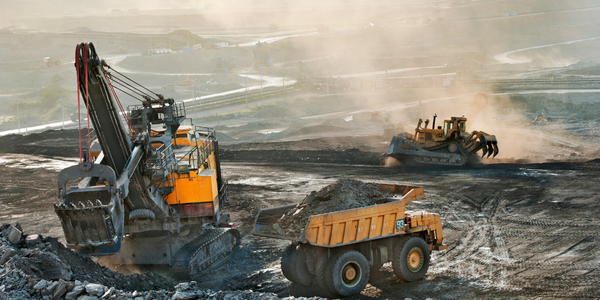技术
- 分析与建模 - 数字孪生/模拟
- 机器人 - 拱架机器人
适用行业
- 建筑与基础设施
- 矿业
适用功能
- 产品研发
用例
- 数字孪生
- 虚拟现实
关于客户
Mirage Machines 是一家生产各种便携式机器的制造商。它们服务于多个行业,包括石油、天然气、发电、船舶建造和维修、采矿和建筑。他们的机器涵盖一系列应用,例如热攻丝、钻孔、攻丝、铣削、管道和套管切割、直线镗孔和定制要求。他们以致力于在设计过程的前端使用详细的结构模拟为客户提供稳健且无风险的解决方案而闻名。
挑战
Mirage Machines 是一家为各行业生产便携式机器的制造商,在设计过程中面临着挑战。他们在设计过程的前端使用详细的结构模拟,以确保其解决方案的稳健性和无风险性质。然而,他们使用的有限元分析 (FEA) 模拟、SolidWorks® Professional 和 Premium 软件包存在局限性。这些软件包仅允许 Mirage 对单个零件和小型装配模型进行 FEA。最近的一个项目需要开发一个龙门架,该龙门架使用一系列磁铁来连接钢轨。最初的设计是采用贱金属,但要求发生了变化,包括一层油漆。这一变化引入了气隙,使磁铁的拉力减少了 40%。 Mirage 需要了解当手臂沿着基础导轨移动时,油漆厚度对磁铁拉力以及结构完整性的影响。
解决方案
为了克服现有 FEA 软件的局限性,Mirage Machines 转向 ANSYS® Professional™ NLS、SolidWorks 的 ANSYS 几何接口和 ANSYS® DesignModeler™。第一步是将龙门装配体的几何形状从 Solidworks 导入 ANSYS DesignModeler。然后,使用 DesignModeler 准备用于仿真的几何形状。最后,利用ANSYS结构动力学软件对混合材料、车身类型和网格类型的装配进行了仿真。该解决方案极大地提高了仿真的准确性和性能,使该公司能够提高吞吐量并降低龙门设计的风险。
运营影响
数量效益

Case Study missing?
Start adding your own!
Register with your work email and create a new case study profile for your business.
相关案例.

Case Study
IoT System for Tunnel Construction
The Zenitaka Corporation ('Zenitaka') has two major business areas: its architectural business focuses on structures such as government buildings, office buildings, and commercial facilities, while its civil engineering business is targeted at structures such as tunnels, bridges and dams. Within these areas, there presented two issues that have always persisted in regard to the construction of mountain tunnels. These issues are 'improving safety" and "reducing energy consumption". Mountain tunnels construction requires a massive amount of electricity. This is because there are many kinds of electrical equipment being used day and night, including construction machinery, construction lighting, and ventilating fan. Despite this, the amount of power consumption is generally not tightly managed. In many cases, the exact amount of power consumption is only ascertained when the bill from the power company becomes available. Sometimes, corporations install demand-monitoring equipment to help curb the maximum power demanded. However, even in these cases, the devices only allow the total volume of power consumption to be ascertained, or they may issue warnings to prevent the contracted volume of power from being exceeded. In order to tackle the issue of reducing power consumption, it was first necessary to obtain an accurate breakdown of how much power was being used in each particular area. In other words, we needed to be able to visualize the amount of power being consumed. Safety, was also not being managed very rigorously. Even now, tunnel construction sites often use a 'name label' system for managing entry into the work site. Specifically, red labels with white reverse sides that bear the workers' names on both sides are displayed at the tunnel work site entrance. The workers themselves then flip the name label to the appropriate side when entering or exiting from the work site to indicate whether or not they are working inside the tunnel at any given time. If a worker forgets to flip his or her name label when entering or exiting from the tunnel, management cannot be performed effectively. In order to tackle the challenges mentioned above, Zenitaka decided to build a system that could improve the safety of tunnel construction as well as reduce the amount of power consumed. In other words, this new system would facilitate a clear picture of which workers were working in each location at the mountain tunnel construction site, as well as which processes were being carried out at those respective locations at any given time. The system would maintain the safety of all workers while also carefully controlling the electrical equipment to reduce unnecessary power consumption. Having decided on the concept, our next concern was whether there existed any kind of robust hardware that would not break down at the construction work site, that could move freely in response to changes in the working environment, and that could accurately detect workers and vehicles using radio frequency identification (RFID). Given that this system would involve many components that were new to Zenitaka, we decided to enlist the cooperation of E.I.Sol Co., Ltd. ('E.I.Sol') as our joint development partner, as they had provided us with a highly practical proposal.

Case Study
Splunk Partnership Ties Together Big Data & IoT Services
Splunk was faced with the need to meet emerging customer demands for interfacing IoT projects to its suite of services. The company required an IoT partner that would be able to easily and quickly integrate with its Splunk Enterprise platform, rather than allocating development resources and time to building out an IoT interface and application platform.

Case Study
Bridge monitoring in Hamburg Port
Kattwyk Bridge is used for both rail and road transport, and it has played an important role in the Port of Hamburg since 1973. However, the increasing pressure from traffic requires a monitoring solution. The goal of the project is to assess in real-time the bridge's status and dynamic responses to traffic and lift processes.

Case Study
Underground Mining Safety
The goal was to produce a safety system to monitor and support underground mining operations; existing systems were either too simple (i.e. phone line) or overly complex and expensive, inhibiting deployment, and providing little-to-no support in event of an accident. Given the dangerous nature of the mining work environment and the strict regulations placed on the industry, the solution would have to comply with Mine Safety and Health Administration (MSHA) regulations. Yet the product needed to allow for simple deployment to truly be a groundbreaking solution - increasing miner safety and changing daily operations for the better.

Case Study
Mining Firm Quadruples Production, with Internet of Everything
Dundee Precious Metal’s flagship mine, in Chelopech, Bulgaria, produces a gold, copper, and silver concentrate set a goal to increase production by 30%. Dundee wanted to increase production quality and output without increasing headcount and resources, improve miner safety, and minimize cost.

Case Study
Fastenal Builds the Future of Manufacturing with MachineMetrics
Fastenal's objective was to better understand their machine downtime, utilization, quality issues, and to embrace cutting-edge manufacturing technology/process improvement capabilities to bring their team to the next level. However, there was a lack of real-time data, visualization, and actionable insights made this transition impossible.



